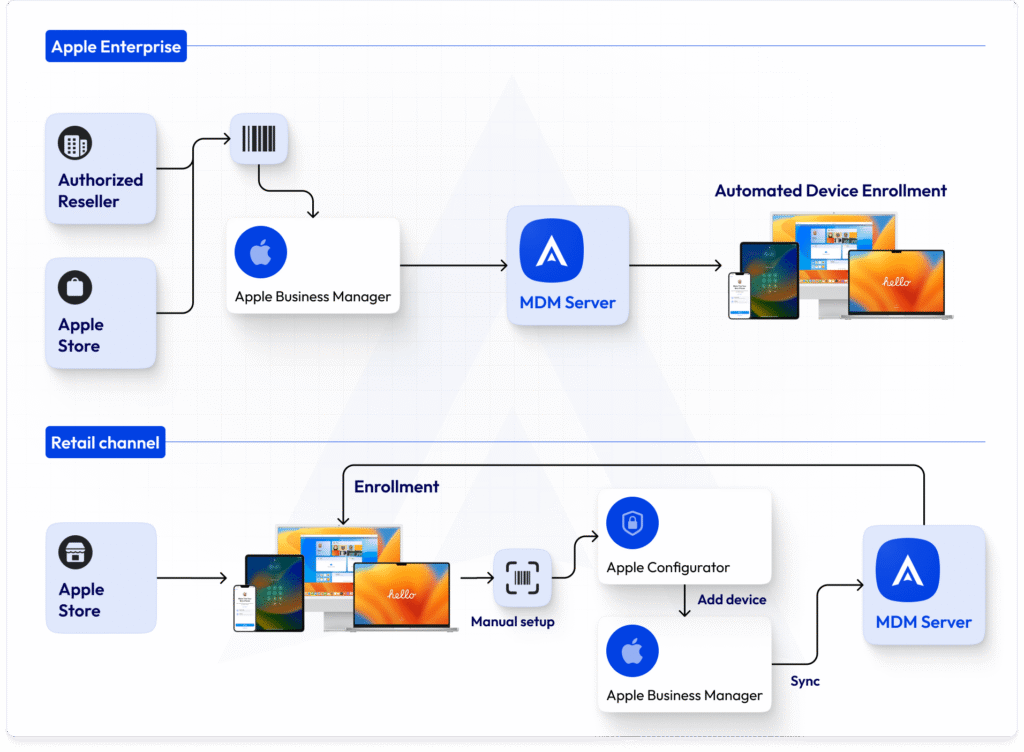In today’s digital-first world, managing devices, content, and user access across an organization can be overwhelming without the right tools. Apple Business Manager is Apple’s answer to simplifying IT administration for companies that rely on Apple devices. Whether you’re managing a fleet of iPhones, deploying new Macs, or distributing proprietary apps, Apple Business Manager helps you streamline the entire lifecycle of Apple devices from deployment to retirement.
This comprehensive guide walks you through everything IT administrators need to know about Apple Business Manager, from its features and setup to practical tips for daily use.
What is Apple Business Manager?
Apple Business Manager is a web-based portal from Apple that allows IT administrators to deploy Apple devices, purchase apps and books in volume, and create Managed Apple IDs for employees. It seamlessly integrates with mobile device management (MDM) solutions, enabling zero-touch configuration for devices across your enterprise.
Introduced as a consolidation of the Device Enrollment Program (DEP) and the Volume Purchase Program (VPP), Apple Business Manager provides a centralized platform to manage devices, users, and content with precision and ease.

Key Features of Apple Business Manager
- Automated Device Enrollment: Enables zero-touch deployment, ensuring devices are configured automatically when turned on for the first time.
- Managed Apple IDs: Allows organizations to create business-specific Apple IDs for employees, ensuring security and role-based access.
- Volume Purchase: Buy apps and books in bulk and assign them to devices or users.
- Role-based Access Control: Assign roles like Administrator, Manager, or Staff with specific privileges.
- Integration with MDM: Sync Apple Business Manager with your MDM for smooth device management.
- Directory Services Integration: Supports integration with Microsoft Azure Active Directory for automated user provisioning.
Why IT Administrators Should Use Apple Business Manager
Apple Business Manager simplifies the complexity of device management and empowers IT teams to focus on innovation and support rather than manual configuration.
Benefits for IT Teams
- Streamlined Setup: Devices are configured automatically out-of-the-box.
- Enhanced Security: Enforce policies remotely and ensure only managed Apple IDs are used.
- Centralized Control: Manage users, apps, and content from one place.
- Scalability: Easily add or remove devices and users as your business grows.
- Data Protection: Apps and books are assigned to users, not devices, ensuring secure distribution.
Use Case Examples
- Education Institutions: Manage thousands of iPads with different user access levels for teachers and students.
- Corporate Environments: Deploy MacBooks and iPhones across multiple departments with customized configurations.
- Healthcare: Securely manage patient data on iPads used by hospital staff.
Getting Started with Apple Business Manager
Setting up Apple Business Manager is straightforward but requires careful planning for integration and user management.
Step 1: Sign Up
Go to business.apple.com and enroll your organization. You’ll need:
- A D-U-N-S number (unique business identifier)
- Business contact information
- A valid domain name
Once verified, you’ll gain access to your Apple Business Manager account.
Step 2: Configure MDM Server
Integrate your preferred MDM solution (e.g., Jamf, Kandji, Mosyle) with Apple Business Manager:
- Go to Settings > MDM Servers in the dashboard
- Add a new MDM server and upload the public key
- Download the server token and upload it to your MDM
This enables automatic device enrollment.
Step 3: Add Devices
You can add devices purchased directly from Apple or authorized resellers:
- Devices appear automatically if purchased with your Apple Customer Number or reseller ID linked
- Assign devices to an MDM server
- Devices are automatically configured when turned on
Step 4: Create Managed Apple IDs
Managed Apple IDs are created for users who need access to Apple services without using personal accounts.
You can:
- Manually create IDs
- Use federated authentication with Azure AD
- Batch import users using a CSV template
Managing Devices with Apple Business Manager
Once setup is complete, IT administrators can leverage Apple Business Manager to manage the full device lifecycle.
Device Enrollment Workflow
- Assign devices to MDM
- Apply configuration profiles (Wi-Fi, VPN, restrictions, etc.)
- Use supervision for additional control (especially useful in education and healthcare)
- Lock or wipe devices remotely if lost or decommissioned
Role-Based Management
Apple Business Manager supports multiple roles:
- Administrator: Full access, including user management and device assignment
- Content Manager: Can purchase and distribute apps
- Staff: Limited permissions, typically read-only access
Assign roles based on departmental needs to maintain security and operational efficiency.
Content Distribution Through Apple Business Manager
Purchasing and distributing content is seamless with Apple Business Manager.
Volume Purchase Program Integration
Buy apps and books in bulk from the App Store:
- Go to Apps and Books
- Search for the app/book and select quantity
- Assign to devices or users via MDM
Redeemable or Managed Licenses
You can choose between:
- Redeemable Codes: One-time use, transferred to user’s personal account
- Managed Licenses: Retain control over licenses and reassign when needed
Managed licenses are recommended for organizational control and flexibility.
Integration with Azure AD and Other Tools
Apple Business Manager supports federated authentication with Azure Active Directory, enabling employees to sign in using existing credentials.
Benefits of Azure AD Integration
- Simplifies user provisioning
- Uses existing SSO setup
- Reduces IT overhead
- Automatically creates Managed Apple IDs
You can also integrate with School Manager or Apple School Manager if you’re in an educational institution.
Common Challenges and Troubleshooting
Even though Apple Business Manager is user-friendly, administrators may encounter a few hurdles.
Devices Not Showing Up?
- Ensure your Apple Customer Number or reseller ID is linked
- Confirm devices were purchased under the registered business account
- Check if the device is eligible (must be new and unopened)
MDM Enrollment Failing?
- Check token validity (server token may need refreshing every 12 months)
- Review your MDM configurations and assign devices properly
Managed Apple ID Issues?
- Confirm correct domain verification
- Ensure email addresses are unique and not used for personal Apple IDs
Best Practices for IT Administrators
To maximize efficiency and minimize headaches, follow these best practices:
1. Document Your Setup
Keep detailed records of:
- MDM server settings
- Domain verification
- Admin roles and permissions
- Device assignments
2. Regularly Update Tokens
MDM tokens and server tokens expire annually. Set calendar reminders to refresh them to avoid enrollment disruptions.
H3: 3. Train Your IT Team
Ensure your team is familiar with Apple Business Manager and MDM tools. Apple also offers certification programs for IT professionals.
4. Use Supervision Mode
Enable supervision to gain full control over devices, especially if you’re handling sensitive data or operating in regulated industries.
Apple Business Manager vs Apple School Manager
Though both platforms share similar functionalities, Apple Business Manager is designed for commercial enterprises, while Apple School Manager caters to educational institutions.
| Feature | Apple Business Manager | Apple School Manager |
|---|---|---|
| Target Audience | Businesses | Schools |
| Apple ID Type | Managed Apple ID | Managed Apple ID |
| Content Type | Apps, Books | Apps, Books, Learning Content |
| Integration | Azure AD | SIS (Student Info Systems) |
Choose the appropriate platform based on your organization’s needs.
Conclusion:
Apple Business Manager has become a cornerstone for IT administrators managing Apple devices. From zero-touch deployments to managing apps and users, it offers a unified platform that’s secure, scalable, and easy to use. By integrating with MDM solutions and supporting federated authentication, Apple Business Manager reduces the complexity of enterprise device management while increasing efficiency.
For any business that relies on iPhones, iPads, or Macs, Apple Business Manager isn’t just an optional tool—it’s an essential one. Invest time in setting it up right, keep your IT team trained, and watch how it transforms the way you manage Apple technology in your organization.




